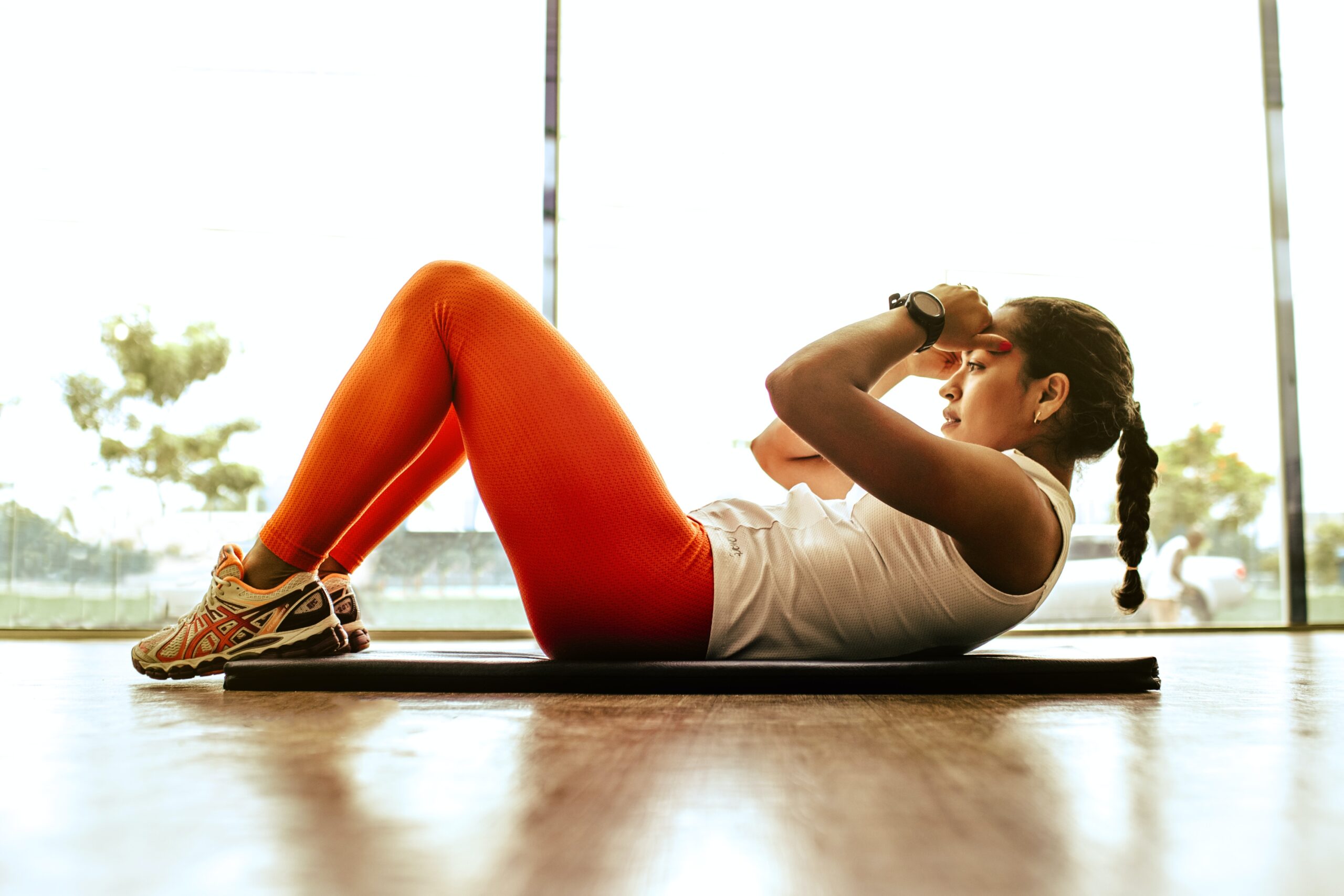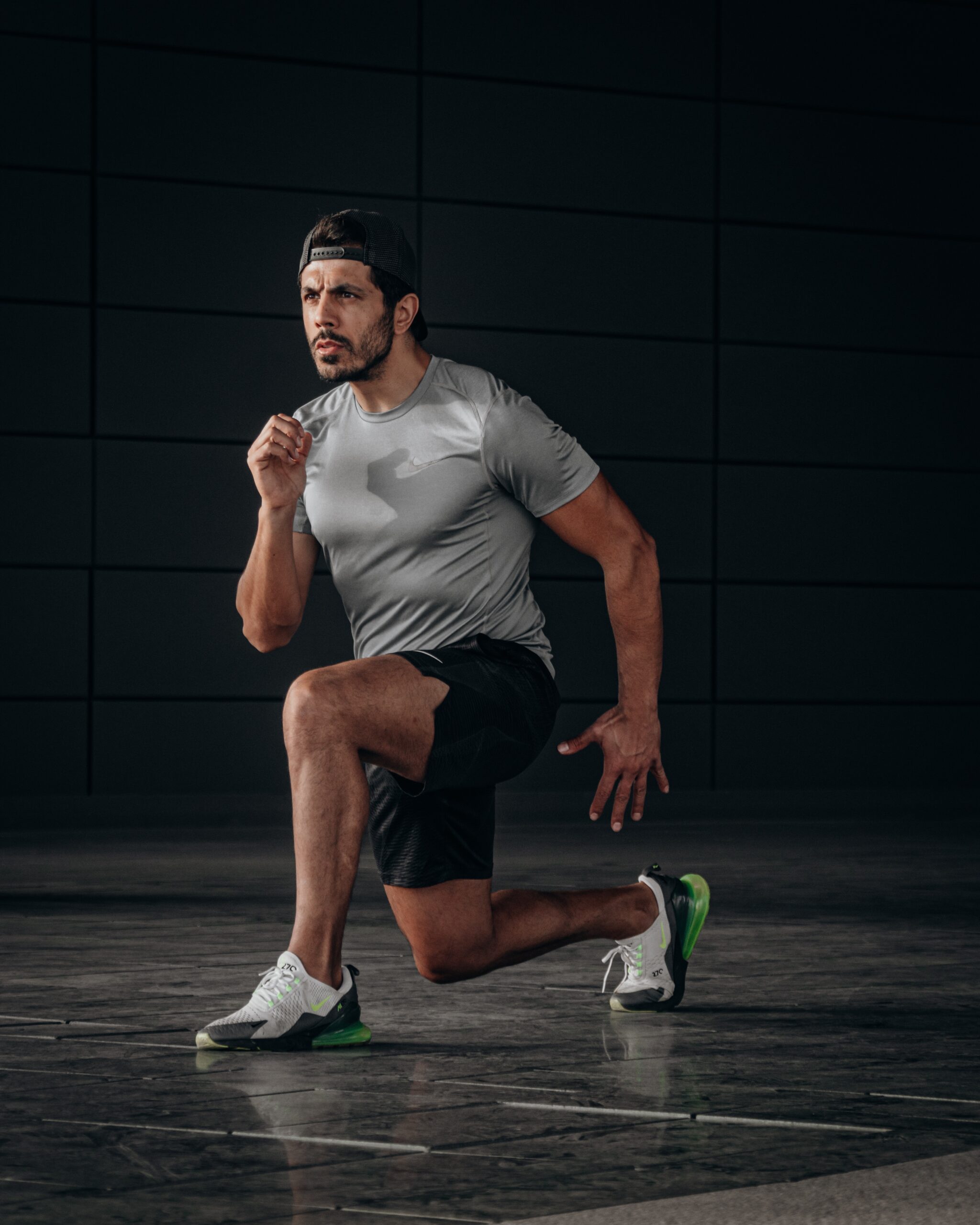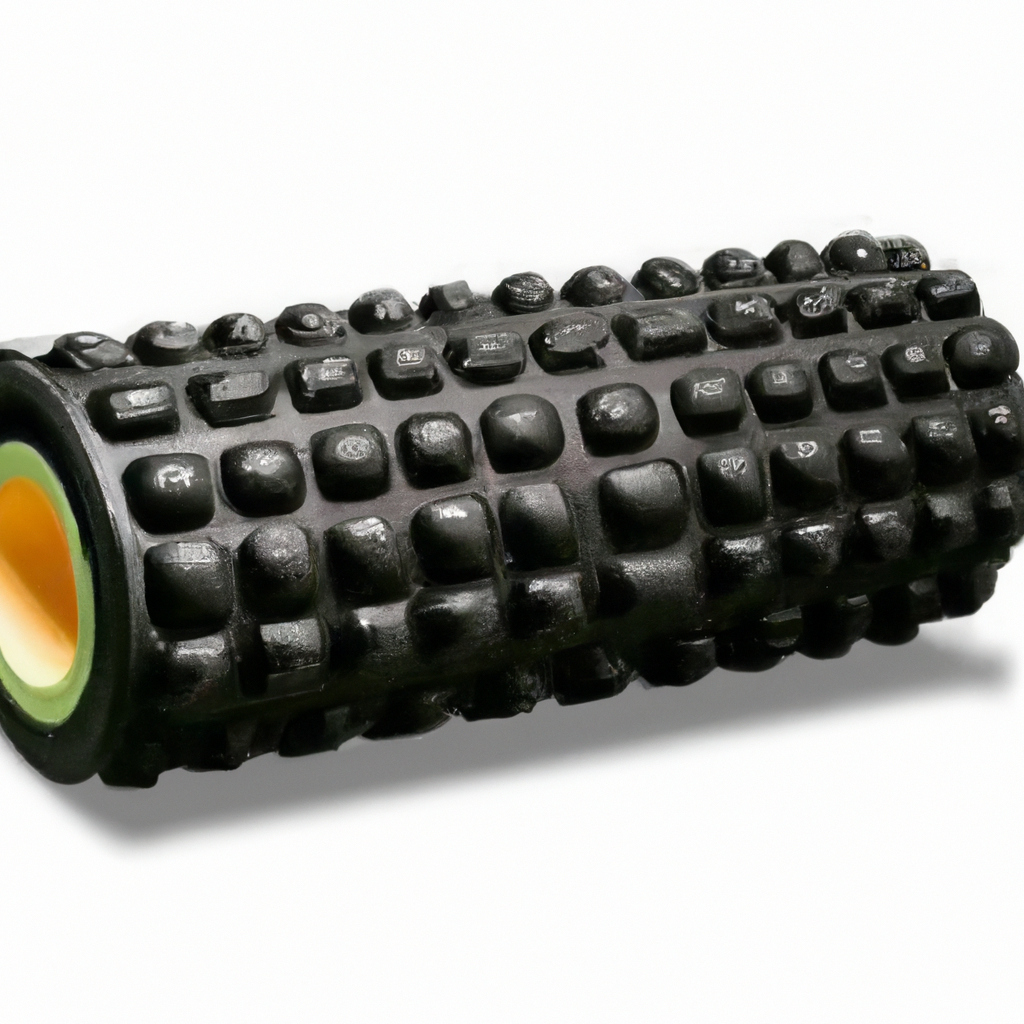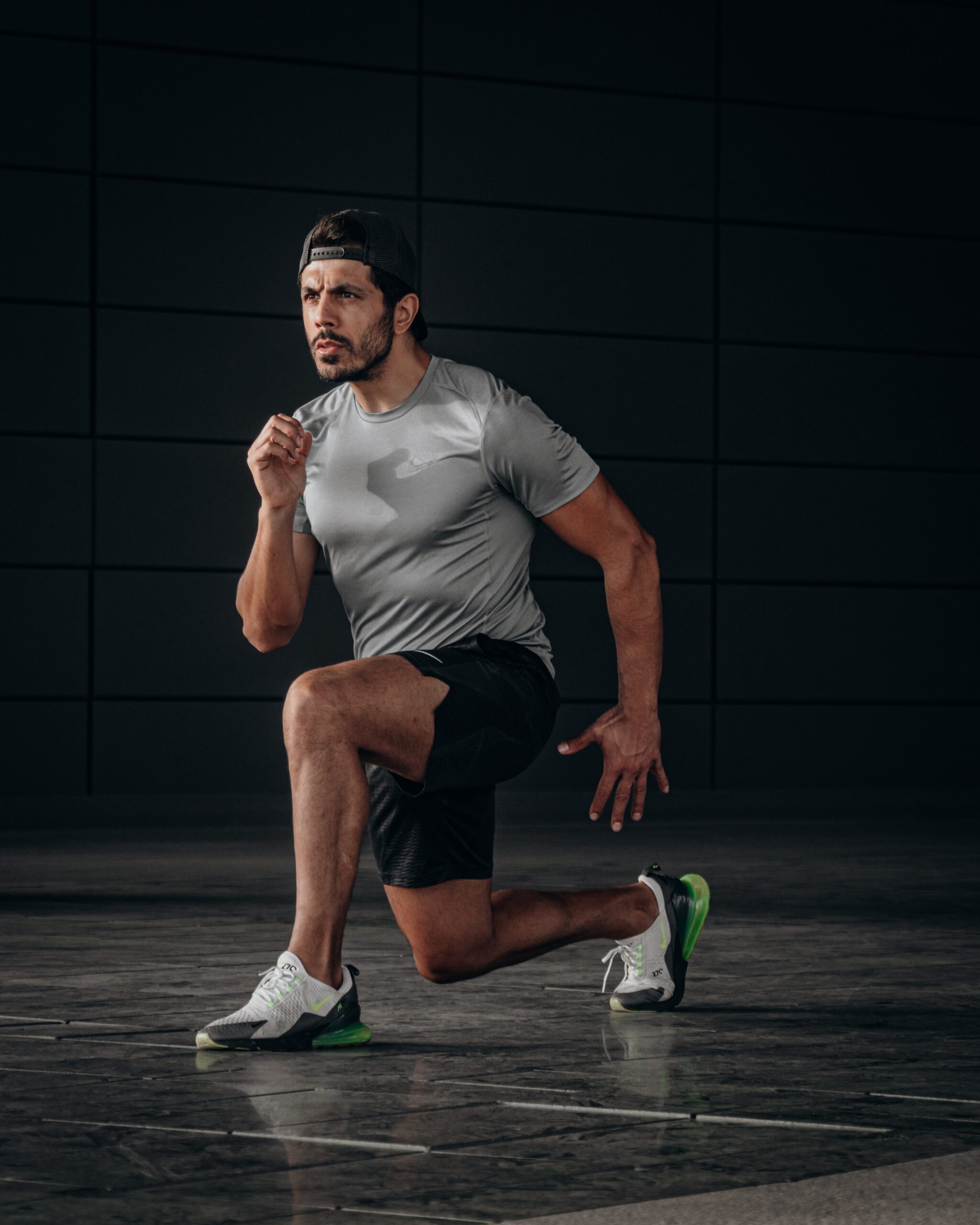You’ve just wrapped up an intense workout or a long day at work, and your muscles are feeling tight and sore. Enter the foam roller: a versatile tool that can help alleviate muscle tension and promote recovery. This article will guide you through the proper techniques and benefits of using a foam roller for muscle recovery. So grab your foam roller, roll up your sleeves, and prepare to give your muscles the TLC they deserve.
Understanding the Concept of Foam Roller for Muscle Recovery
What is a foam roller
A foam roller is a cylindrical tool made of foam that is commonly used for self-massage and muscle recovery. It can vary in size, density, and texture. Foam rollers are available in different lengths, with the most common size being around 6 inches in diameter and 36 inches in length. They are typically used to apply pressure to muscles and soft tissues to alleviate muscle tension, reduce muscle soreness, and improve muscle flexibility.
The science behind foam rolling
Foam rolling works on the principle of self-myofascial release. Fascia is a connective tissue that surrounds muscles, organs, and bones in our body. When muscle fibers become tight or damaged, the fascia surrounding them can become stiff and less pliable. Foam rolling can help break up adhesions and release tension in the fascia, thereby promoting better blood circulation and nutrient exchange to the muscles. It also stimulates the nervous system, leading to a relaxation response and the release of endorphins, which can help reduce pain and improve mood.
How does foam roller aid muscle recovery
Foam rolling aids in muscle recovery by targeting trigger points or knots in the muscles. These trigger points are areas of tension or tightness that can cause discomfort and restrict movement. By applying pressure to these trigger points using a foam roller, you can help relax the muscles and alleviate pain. Foam rolling can also increase the range of motion in joints, enhance flexibility, and reduce muscle soreness after a workout. Additionally, it can assist in the removal of metabolic waste products from the muscles and promote faster recovery.
Types of Foam Rollers Suitable for Muscle Recovery
High-density foam rollers
High-density foam rollers are the most common type of foam rollers used for muscle recovery. They are made of firm foam and offer a deeper level of tissue penetration. These rollers are ideal for individuals who prefer a more intense massage and have a higher pain threshold. High-density foam rollers are durable and provide excellent support for various muscle groups.
Soft foam rollers
Soft foam rollers, as the name suggests, are made from softer materials and offer a gentler massage experience. They are suitable for individuals who are new to foam rolling or prefer a less intense massage. Soft foam rollers are great for targeting larger muscle groups, such as the quadriceps, hamstrings, and glutes. They provide a comfortable and relaxing massage, making them ideal for individuals with lower pain tolerance.
Textured or ridged foam rollers
Textured or ridged foam rollers have bumps, knobs, or grooves on their surface. These rollers provide a deeper and more targeted massage by applying pressure to specific points on the muscle. The textured surface helps to break up adhesions and trigger points more effectively, providing a greater release of muscle tension. Textured foam rollers are commonly used by athletes, fitness enthusiasts, and individuals with chronic muscle tightness.
Vibrating foam rollers
Vibrating foam rollers, as the name suggests, have built-in vibration capabilities. These rollers provide an additional level of stimulation to the muscles, enhancing blood flow and relaxation. The vibrations help to loosen tight muscles and promote faster recovery. Vibrating foam rollers are often used by professional athletes and individuals who require a more vigorous massage.

This image is property of images.unsplash.com.
Ideal Time to Use a Foam Roller for Muscle Recovery
Using foam roller pre-workout
Using a foam roller before a workout can have many benefits. Foam rolling helps to increase blood flow to the muscles, which can improve muscle performance and reduce the risk of injury during exercise. It also helps to warm up the muscles and increase their flexibility, allowing for a greater range of motion. Foam rolling before a workout can be particularly beneficial for individuals with tight muscles or those who engage in activities that require a lot of mobility, such as dancing or gymnastics.
Using foam roller post-workout
Foam rolling after a workout is a great way to aid in muscle recovery. It helps to reduce muscle soreness, alleviate tension, and promote relaxation. By foam rolling post-workout, you can assist in flushing out metabolic waste products, such as lactic acid, from the muscles. This can help reduce muscle fatigue and promote faster recovery. Foam rolling after a workout can also be a beneficial cool-down activity, as it helps to bring the body back to its resting state and promote a sense of calmness.
Incorporating foam roller into your daily routine
Foam rolling can be incorporated into your daily routine as part of a regular self-care practice. It can be done in the morning to help wake up and loosen the muscles, or in the evening to relax and unwind after a long day. Spending just a few minutes each day foam rolling can provide significant benefits in terms of muscle recovery, flexibility, and overall well-being. You can choose to focus on specific muscle groups or do a full-body foam rolling routine, depending on your needs and preferences.
Preparing Your Body for Foam Rolling
Warming up
Before starting your foam rolling session, it is important to warm up your body to increase blood flow and prepare the muscles for the massage. This can be done through light aerobic exercises such as jogging, cycling, or jumping jacks. Warming up helps to raise your body temperature, increase heart rate, and improve circulation, making your muscles more receptive to the foam roller.
Targeting specific muscle groups
Foam rolling is most effective when you target specific muscle groups that are tight or sore. This allows you to focus on areas that need the most attention and provide targeted relief. You can identify these areas by paying attention to any muscle soreness, tightness, or discomfort you may be experiencing. It is important to listen to your body and adjust the intensity of the foam rolling accordingly.
Understanding your pain thresholds
Foam rolling can sometimes be uncomfortable, especially when targeting tight or overworked muscles. However, it is important to distinguish between discomfort and pain. Discomfort is a normal sensation when foam rolling and typically indicates that the muscles are receiving the intended benefit. On the other hand, pain that is sharp or intense may be an indication of improper technique or an underlying injury. It is crucial to stay within your pain thresholds and avoid putting excessive pressure on sensitive areas.

This image is property of images.unsplash.com.
Techniques for Using a Foam Roller Effectively
The lengthwise roll
The lengthwise roll is a basic foam rolling technique that involves applying pressure along the length of a muscle or muscle group. To perform this technique, position the foam roller under the target muscle and slowly roll back and forth, using your body weight to apply pressure. Start from the starting point of the muscle and roll towards the insertion point. Repeat this motion for a desired number of repetitions, focusing on any tight or sore areas. The lengthwise roll is effective for larger muscle groups, such as the quadriceps, hamstrings, and back muscles.
The crosswise roll
The crosswise roll targets smaller muscle groups and specific muscle fibers within a larger muscle group. To perform this technique, position the foam roller perpendicular to the muscle fibers you want to target. Apply pressure to the foam roller using your body weight and roll back and forth, focusing on the targeted area. This technique allows for a more precise massage, especially in areas with trigger points or knots. The crosswise roll is commonly used for muscles in the calves, forearms, and shoulders.
The circular roll
The circular roll is performed by applying pressure to the foam roller and rolling in a circular motion over a specific muscle or muscle group. This technique helps to massage the muscle fibers from various angles and can be particularly effective for targeting trigger points or knots. It provides a more comprehensive massage and promotes greater relaxation. The circular roll can be used for muscles in the glutes, hips, and IT band.
Specific Exercises for Different Body Parts
Foam rolling for your legs
Foam rolling for the legs can help alleviate muscle tightness and reduce the risk of injury. Start by foam rolling the calves, moving from the ankles to the knees. Apply firm pressure to any tight spots or trigger points. Next, foam roll the quadriceps by positioning the foam roller under the front of your thigh and rolling from the hips to the knees. Pay attention to any areas of tension or soreness. Finally, foam roll the hamstrings by positioning the foam roller under the back of your thigh and rolling from the hips to the knees. Take your time and adjust the pressure as needed.
Foam rolling for your back
Foam rolling for the back can help relieve muscle tension and improve posture. Start by foam rolling the upper back by positioning the foam roller vertically along your spine. Support your head with your hands and slowly roll from the upper back to the middle back. Focus on any tight or sore areas and take deep breaths to relax. Next, foam roll the lower back by positioning the foam roller horizontally under your lower back. Gently roll from side to side, focusing on any areas of discomfort. Be mindful of your body’s alignment and adjust the pressure accordingly.
Foam rolling for your arms
Foam rolling for the arms can help release tension in the muscles and improve flexibility. Start by foam rolling the triceps by positioning the foam roller under your triceps and rolling from the elbow to the shoulder. Apply gentle pressure and focus on any areas of tightness. Next, foam roll the biceps by positioning the foam roller under your biceps and rolling from the elbow to the shoulder. Take your time and adjust the pressure as needed. Foam rolling the arms can be particularly beneficial for individuals who engage in activities that involve repetitive arm movements, such as weightlifting or swimming.
Foam rolling for your neck
Foam rolling for the neck can help relieve muscle tension and alleviate neck pain. Start by lying on your back with the foam roller positioned horizontally under your neck. Support your head with your hands and gently roll from side to side, focusing on the muscles along the sides of your neck. Take slow and deep breaths to relax the muscles. You can also perform small circular motions or hold the foam roller in a static position on any tight or sore areas. Foam rolling the neck should be done with caution and the pressure should be kept at a comfortable level.
Foam rolling for your glutes
Foam rolling for the glutes can help alleviate tightness and discomfort in the muscles. Start by sitting on the foam roller with one buttock and cross the ankle of the same side over the opposite knee. Apply pressure to the foam roller and roll back and forth, focusing on the target glute. You can also perform small rocking motions or hold the foam roller in a static position on any tight spots. Repeat on the other side. Foam rolling the glutes can be particularly beneficial for individuals who sit for long periods or participate in activities that engage the glute muscles, such as running or cycling.

This image is property of images.unsplash.com.
Common Mistakes to Avoid When Using a Foam Roller
Rolling too quickly
One common mistake when using a foam roller is rolling too quickly. It is important to maintain a slow and controlled pace when foam rolling to effectively target the muscles and provide adequate pressure. Rolling too quickly can result in a superficial massage and may not provide the desired benefits. Take your time and focus on each muscle group, paying attention to any areas of tension or discomfort.
Limiting foam rolling to painful areas only
Another mistake is limiting foam rolling to painful areas only. While it is important to focus on areas of soreness or tightness, it is also beneficial to foam roll surrounding muscles and related muscle groups. This helps to improve overall muscle balance and promotes better movement patterns. By addressing both the painful areas and the surrounding muscles, you can achieve a more comprehensive and effective muscle recovery.
Using improper body postures
Using improper body postures during foam rolling can lead to ineffective results and potential injury. It is important to maintain proper alignment and engage the core muscles to provide stability. Avoid slouching or arching the back, as this can put unnecessary strain on the spine. Pay attention to your body’s positioning and make adjustments as needed to ensure proper technique and optimal results.
The Benefits of Using a Foam Roller for Muscle Recovery
Enhancing flexibility
Foam rolling can help enhance flexibility by stretching and lengthening the muscles. By applying pressure to the muscles, foam rolling helps to break up adhesions and increase the range of motion in the joints. This can be particularly beneficial for individuals who have tight or restricted muscles, or those who engage in activities that require a greater degree of flexibility, such as yoga or dancing.
Reducing muscle tension and soreness
One of the primary benefits of foam rolling is its ability to reduce muscle tension and soreness. By applying pressure to the muscles, foam rolling helps to relax tight muscles, release trigger points, and alleviate muscle soreness. This can be especially beneficial after intense workouts, prolonged periods of sitting, or activities that put repetitive strain on certain muscle groups.
Improving blood circulation
Foam rolling helps to improve blood circulation to the muscles, which can aid in muscle recovery and overall health. By applying pressure to the muscles, foam rolling helps to increase blood flow, which in turn delivers oxygen and nutrients to the muscles. This can help reduce muscle fatigue, promote faster recovery, and enhance overall muscle performance.

Potential Risks and Precautions
Recognizing when not to use a foam roller
While foam rolling can be a beneficial practice for muscle recovery, there are certain situations when it is not appropriate. It is important to recognize when not to use a foam roller to avoid exacerbating an existing injury or condition. If you have an acute injury, open wounds, deep vein thrombosis, or any other health conditions that could be worsened by foam rolling, it is best to consult with a healthcare professional before engaging in foam rolling activities.
Understanding the appropriate pressure to apply
Applying the appropriate pressure is crucial when using a foam roller. While it may be tempting to apply excessive pressure to try and achieve greater benefits, doing so can cause unnecessary pain or injury. It is important to start with a moderate level of pressure and gradually increase as tolerated. Listen to your body and adjust the pressure accordingly. If you experience sharp or intense pain, stop foam rolling immediately and consult with a healthcare professional.
Avoiding rolling over joints, bones, and injured muscles
When using a foam roller, it is important to avoid rolling directly over joints, bones, or injured muscles. Foam rolling is meant to target the muscles and soft tissues, not the bones or tendons. Rolling over joints or bones can cause discomfort and potentially result in injury. Similarly, rolling over injured muscles can aggravate the injury and delay the healing process. It is important to be mindful of your body’s anatomy and limitations when foam rolling.
Maintaining Your Foam Roller
Cleaning the foam roller
Regular cleaning of your foam roller is important to maintain hygiene and prevent the buildup of bacteria or dirt. Most foam rollers can be cleaned with a mild detergent or soap and warm water. Gently scrub the surface of the foam roller using a soft cloth or sponge, paying attention to any textured or ridged areas. Rinse thoroughly and allow the foam roller to air dry before storing or using it again. Avoid using harsh chemicals or abrasive materials as they can damage the foam roller.
Inspecting for wear and tear
It is important to regularly inspect your foam roller for any signs of wear and tear. Over time, foam rollers can become compressed, torn, or lose their shape, which can affect their effectiveness and safety. Check for any visible signs of damage, such as cracks, dents, or uneven surfaces. If you notice any significant wear and tear, it may be time to replace your foam roller to ensure optimal performance and prevent injury.
Replacement schedule and signs it’s time to replace
The lifespan of a foam roller can vary depending on its quality, frequency of use, and maintenance. As a general guideline, foam rollers should be replaced every 6 to 12 months, or sooner if they show signs of significant wear and tear. Signs that it’s time to replace your foam roller include the foam losing its firmness, developing deep indentations, or becoming misshapen. If your foam roller no longer provides the desired level of support or is causing discomfort during use, it is a good indication that it needs to be replaced.
In conclusion, foam rolling is a valuable tool for muscle recovery and overall well-being. By understanding the concept of foam rolling and utilizing the appropriate techniques, individuals can experience the numerous benefits it offers, ranging from enhanced flexibility to reduced muscle tension and improved blood circulation. It is important to approach foam rolling with caution, recognizing potential risks and precautions, and taking the necessary steps to maintain the foam roller for optimal effectiveness. Incorporating foam rolling into a regular routine can significantly contribute to muscle recovery and support a healthy and active lifestyle.


